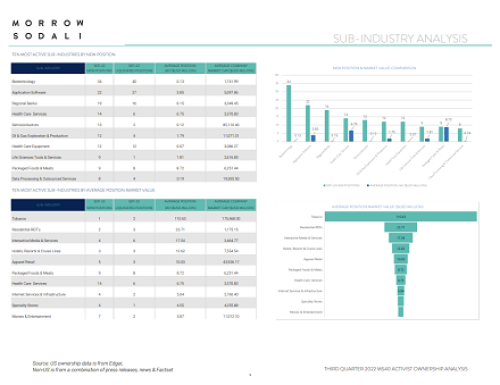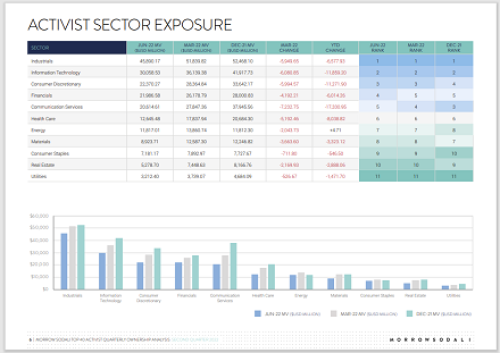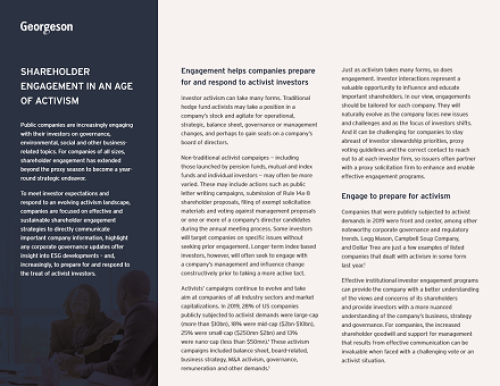A conversation with Greg Taxin, Luma Asset Management
Greg Taxin has had a many-hued career that makes him uniquely suited to activist investing – and to giving advice to companies on the receiving end of it. Having started his career at Wachtell Lipton, the law firm known for fighting activists, Taxin went on to become an investment banker before co-founding proxy advisory firm Glass Lewis in 2003. Later he headed up activism for the Clinton Group, with IR Magazine calling him one of the ‘new guard in shareholder activism’.
His current firm, Luma Asset Management, raises money for special purpose vehicles to invest in specific targets of activist campaigns. In an odd twist, he has been engaged by some companies to help with activist vulnerability assessment and response preparedness.
In these segments of the video series ‘ON Message with Neil Stewart’, produced by Bloomberg and IR Magazine, Taxin dispenses tips for IROs who want to learn how to work with the new generation of constructive activists, not necessarily fight them.
Part 2: Vulnerability assessment
Companies often underestimate the amount of work activists do to prepare for campaigns. For example, Taxin and his firm recently spent a solid six months digging for every document about a target company that’s available publicly or semi-publicly (‘semi-publicly’ meaning things like LinkedIn profiles of directors and officers), while talking to dozens of people, from competitors to former executives.
‘[Activists] may still be wrong, but they’re not going to be uninformed or naïve. The challenge for the IR person is to make sure they too have looked at all the information, thought about how it could be perceived by shareholders, and talked truth to management about the vulnerabilities and things that should be done to create value at the company,’ he advises.
Part 3: Response plan
Taxin’s most important piece of advice about responding to an activist is to take the right tone, right away. Even though the environment has shifted in the last several years, some companies still respond, ‘You’re a short-termer, you don’t understand my business, I can’t learn anything from you, we’ve already thought of all the options.’ Says Taxin: ‘That kind of stiff-arm will really annoy not just the activist, but all your investors.’
He also advises companies to avoid ‘advisor bloat’ as they seek as many points of view as possible. ‘There’s a danger of appearing overly defensive, and spending shareholder money in excess to defend their privilege or incumbency, rather than thinking about the company,’ he says.
Part 4: Short-termism backlash
Critics say activists are out for the short-term buck and are damaging long-term investors. There’s even a political backlash, including Hillary Clinton warning of ‘hit-and-run activists whose goal is to force an immediate payout,’ in a speech in July 2015.
‘It’s a nice little sound bite, but like most sound bites, it’s really a canard,’ Taxin responds. While acknowledging that activists worry about their monthly or quarterly returns, he explains, ‘The fact is the best way to get a stock price to move in the short term is to get the business and the company on a better long-term footing. So if the company is going to pursue a more efficient use of capital over the long term, or be in better businesses or have better margins over the long term, that change gets priced into today’s stock price very quickly.’
Part 5: White hats v black hats
If an activist situation ever turns into a proxy fight, Taxin says it’s crucial for IR professionals to understand that the people who vote are generally not the analysts who cover the stock. They don’t know the company or industry well and aren’t able to assess subtle points about capital allocation. Instead they’re people from the corporate governance department looking at bigger thematic points, like if the board can be trusted to do the right thing.
‘Proxy fights are really morality tales,’ Taxin says. ‘They’re about who’s the white hat and who’s the black hat, and they’re painted with fairly broad strokes rather than the minutia the IR professional is more accustomed to dealing with.’










